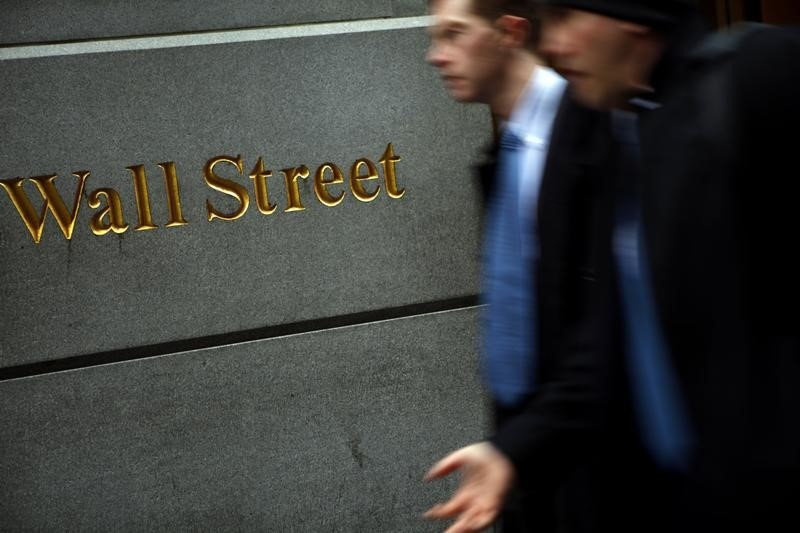US LNG exports surge but will buyers in China turn up?
* Weekly jobless claims fall
* Biden calls jobless claims report economic progress
* Nike skids on social media fallout over Xinjiang statement
* Dow up 0.30%, S&P 500 up 0.23%, Nasdaq down 0.18%
(Adds mid-afternoon prices)
By Herbert Lash
NEW YORK, March 25 (Reuters) - The Nasdaq slid on Thursday
as investors sold technology shares and bought underpriced
stocks likely to do well on expectations the U.S. economy grows
at its fastest pace in decades this year.
President Joe Biden called news that the number of Americans
claiming unemployment insurance had dropped significantly as
shown in a Labor Department jobless claims report economic
progress, but investors mostly shrugged it off. Claims for unemployment benefits dropped to a one-year low
last week, a sign that the U.S. economy is on the verge of
stronger growth as the public health situation improves and
temperatures rise with the start of spring. An end-of-quarter rebalancing of investment portfolios by
institutional investors added to another seesaw session of the
major Wall Street indexes rising and falling amid the ongoing
rotation from growth into so-called value stocks.
Five of the 11 S&P sectors fell, led by the communication
services .SPLRCL and technology .SPLRCT indexes that hold
some of the best-performing stocks of 2020, including Microsoft
Corp MSFT.O , Amazon.com Inc AMZN.O and Netflix Inc NFLX.O .
A reverse correlation between the Dow and the Nasdaq has
occurred already far more this year than in a typical full year,
said David Bahnsen, chief investment officer at the Bahnsen
Group in Newport Beach, California.
"Any reverse correlation between the Dow and Nasdaq is
pretty embedded right now, and I expect it will continue,"
Bahnsen said. "There is ongoing rotation out of tech, there's
ongoing de-risking for some of the small caps."
The Nasdaq Composite .IXIC has fallen in March after four
straight months of gains as rosy economic projections lifted
demand for undervalued cyclical stocks, but also raised fears of
higher inflation as seen in the jump in 10-year Treasury yields.
The rapid rise in the 10-year not bearish but rather a
bullish indicator, Bahnsen said.
"It is happening because we're vaccinating, it is happening
as the economy reopens, it is happening because we're going to
get a really big, high single-digit GDP number this year," he
said.
Heavyweight technology stocks Facebook Inc FB.O , Google
parent Alphabet Inc GOOGL.O and Twitter Inc TWTR.N slipped
about 1% ahead of their chief executives' testimony before
Congress about extremism and misinformation on their services.
By 2:48 p.m. EDT, the Dow Jones Industrial Average .DJI
rose 98.61 points, or 0.3%, to 32,518.67, the S&P 500 .SPX
gained 9.04 points, or 0.23%, to 3,898.18 and the Nasdaq
Composite .IXIC dropped 23.25 points, or 0.18%, to 12,938.64.
The CBOE volatility index .VIX was up for a third straight
day after briefly falling to its pre-pandemic lows earlier this
week.
Energy stocks .SPNY shed 1%, tracking lower crude prices.
O/R
Utilities .SPLRCU , consumer staples .SPLRCS and real
estate .SPLRCR stocks - perceived as safer during times of
economic uncertainty - were among the few gainers on the day.
Shares of Nike Inc NKE.N fell 4.1% as the sporting goods
giant faced a Chinese social media backlash over its comments
about reports of forced labor in Xinjiang. Darden Restaurants Inc DRI.N added 6.9% after it announced
a new share buyback plan and forecast upbeat fourth-quarter
revenue and profit.
Advancing issues outnumbered declining ones on the NYSE by a
1.23-to-1 ratio; on Nasdaq, a 1.25-to-1 ratio favored advancers.
The S&P 500 posted 10 new 52-week highs and no new lows; the
Nasdaq Composite recorded 23 new highs and 158 new lows.
